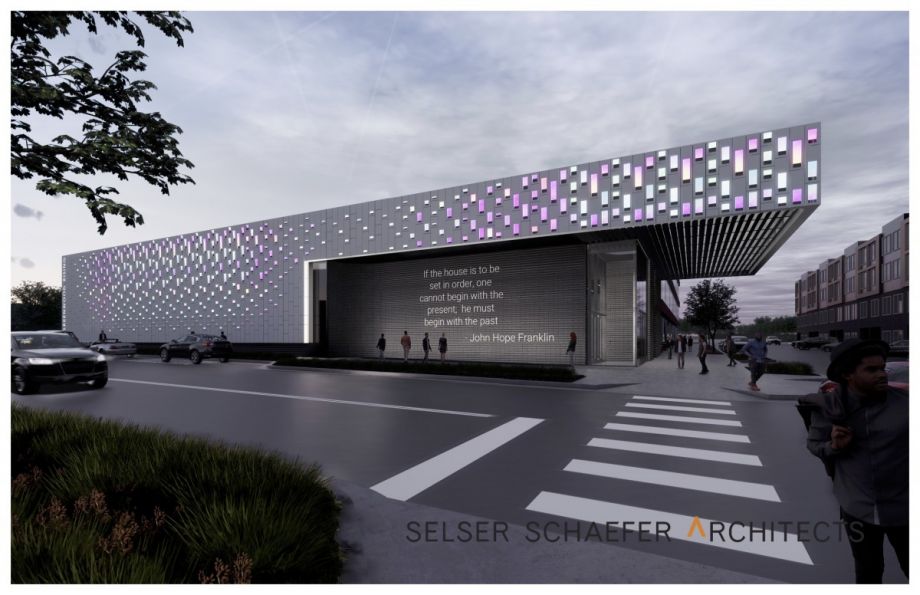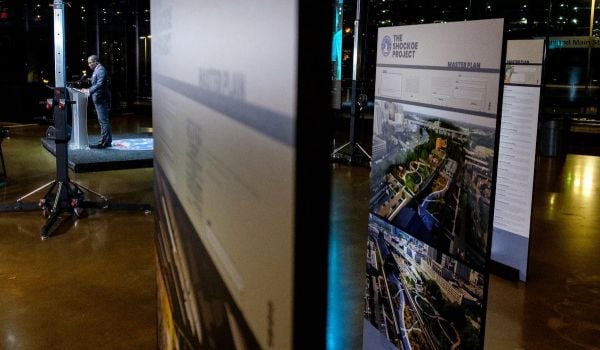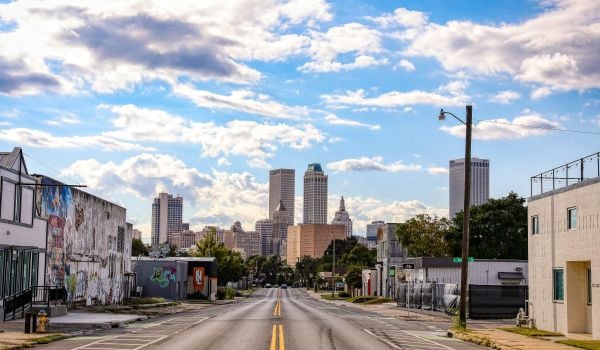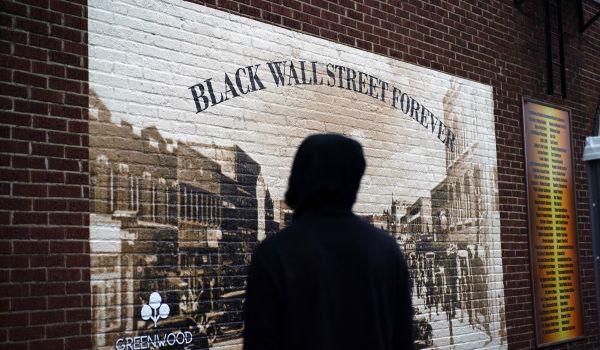On May 31, 1921, at 10:30 pm, the first shot was fired that began the Tulsa Race Massacre. Through June 1, mobs of white residents attacked black residents and businesses of the Greenwood District in Tulsa, Oklahoma, in what’s now known as one of the worst incidents of racial violence in American history. The segregated community of 10,000, considered the city’s Black Wall Street, was destroyed through looting, fires and violence.
On that same day at 10:30 p.m., 99 years after the first shot, a group of Greenwood residents and business owners came together for a candlelight vigil where they stood in silence to honor the loss of the state’s most prosperous African American enclave. The event was organized by the 1921 Tulsa Race Massacre Centennial Commission, formed five years ago to educate the public and commemorate the incident around the 100th anniversary of the massacre.
Since its founding, the commission has made significant progress on beginning a dialogue not just around the massacre’s history, but ways that Tulsa and the country can learn and heal from it. A memorial walk and history center known as Greenwood Rising are both on track to open next year, alongside other initiatives. The history center will include a discussion space called Journey to Reconciliation, according to project manager Phil Armstrong. “If it was open today,” he says, “We would probably be hosting programs where people could come and express their feelings about what’s happened in Minneapolis.”
Armstrong had studied the history of the Tulsa Race Massacre at Central State University, an HBCU, before moving to the city in 1997. “It was shocking to find out that I knew more about this history of Greenwood than most of the people, black and white, who grew up here,” he says. “It was not something that was regularly talked about.”
The media suppressed news of the massacre after it happened. In ensuing years “it was not widely taught — it’s not part of the curriculum,” according to Hannibal Johnson, a historian who serves as education chair for the 1921 Centennial Commission. That didn’t begin to change until 2001 when the state organized an official Race Riot Commission to review details of the event.
The most significant progress has come in the past five years, after Oklahoma Senator Kevin Matthews established the 1921 Tulsa Race Massacre Centennial Commission. “Recent events throughout the country, across our state and in the city of Tulsa serve to remind us of the extreme racial, cultural and political divisions that impede this nation’s fulfillment of equality and opportunity for all,” he wrote at the time. “It takes courage to be transparent about our history.”
On the education front, the 1921 Commission developed curriculum and lessons around the history. 2020 marked the third year of a Summer Teacher’s Institute bringing mostly local educators together to learn about the history of Greenwood, while also developing strategies to teach it. The goal, Johnson says, is to make the history part of public school curriculum as well as state testing.
Due to COVID-19, this year’s institute was held as a webinar open to teachers across the country, which had unexpected benefits. “We thought we might have 150 subscribers — we had over 350 folks on the webinar, including people from Boston, Chicago, Dallas and other communities outside Tulsa in Oklahoma,” Johnson says.
Another focus of the commission is Greenwood’s economy, rebuilt by black entrepreneurs following the massacre but devastated again by urban renewal. It is no longer a “black entrepreneurial mecca,” according to Johnson, but still a hub for business, culture and entertainment.
The Commission is preparing to announce partnerships with local organizations to support black entrepreneurship, according to economic development chair Maggie Hille-Yar. Last summer the commission supported Black upStart, a pop-up school based in the Washington, D.C., area, in hosting the entrepreneurship program “Black Wall Street: Tulsa Edition.” This May, the commission announced its first round of grants for the Victory of Greenwood, a project in which historians will uncover stories of the entrepreneurs who founded and rebuilt Greenwood, to counter the narratives of its destruction.
There’s also been progress on a community-led archaeology project that began in 2018. In December of last year, “archaeologists presented new radar results that indicated possible mass grave signals for at least two sites,” according to a recent article in Sapiens. “Early this February, a public oversight committee gave their blessing for archaeological excavations to begin.”
Though excavation has been delayed due to COVID-19, the goal is to better understand the loss of life during the massacre and pave a way toward reconciliation. While the official death toll recorded was recorded at 36, some historians estimate the figure closer to 300.
One particularly significant development is the announcement this April of a site for Greenwood Rising after a land donation. “This facility will be built, in a sense, on land that was stolen from individuals,” says Armstrong. “Greenwood Rising will educate and tell the legacy and history of how Greenwood came to be.” The Journey to Reconciliation discussion space will include an amphitheater to host conversations and events on race.
Greenwood Rising will be built at the “entrance” to the Greenwood District and will connect to the Pathway to Hope memorial walking path. The path, now being developed by the Oklahoma Department of Transportation, attempts to knit together portions of the community torn apart by urban renewal and construction of the I-244 highway.
Armstrong feels hopeful that in a year the Greenwood District will be ready for a national acknowledgment and commemoration of the Tulsa Race Massacre. “Tulsa will become a place for unity, reconciliation and healing,” he says. “We can use this tragedy to bring people together.”

Emily Nonko is a social justice and solutions-oriented reporter based in Brooklyn, New York. She covers a range of topics for Next City, including arts and culture, housing, movement building and transit.
Follow Emily .(JavaScript must be enabled to view this email address)





_600_350_80_s_c1.jpg)








